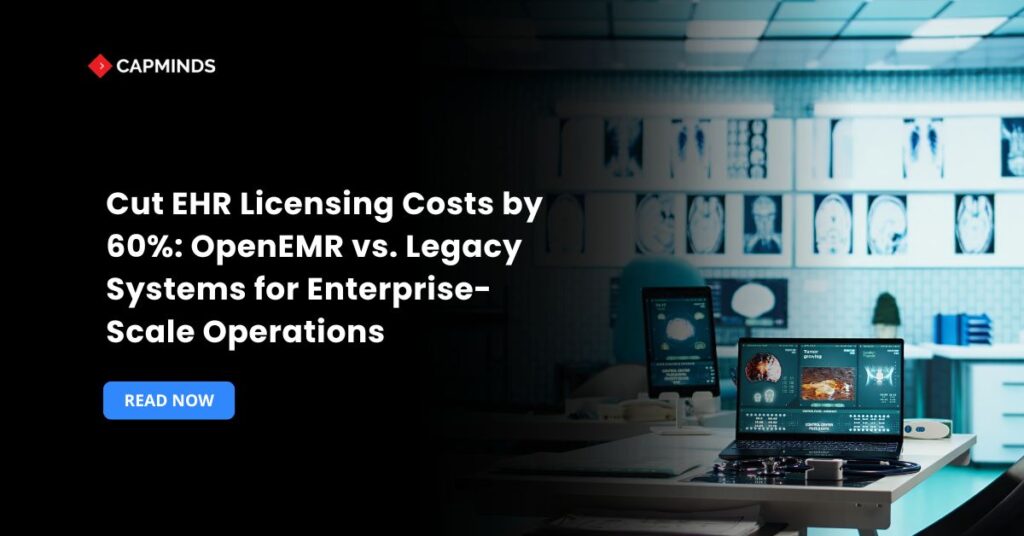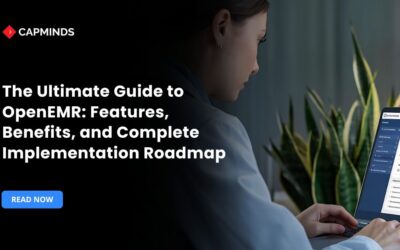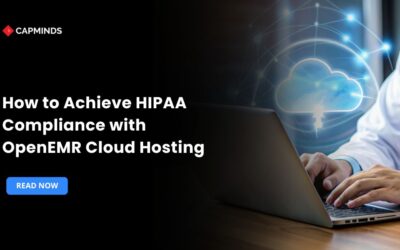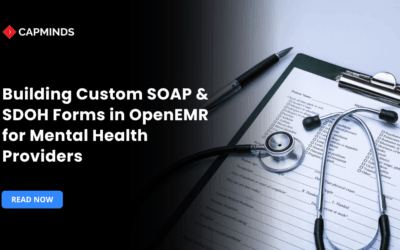Cut EHR Licensing Costs by 60%: OpenEMR vs. Legacy Systems for Enterprise-Scale Operations
Healthcare sector, enterprise-scale businesses face increasing pressure to optimize operations while keeping costs under control. EHR licensing is a significant drain on budgets. Traditional legacy EHR systems are reliable, frequently come with high licensing fees, hidden maintenance expenses, and restricted flexibility.
OpenEMR is a free, open-source EHR software that is transforming healthcare organizations’ management of patient data. In this blog, we will compare OpenEMR and legacy EHR systems and discuss how healthcare organizations can reduce licensing costs by up to 60% while maintaining compliance, scalability, and performance.
Why are EHR Licensing costs escalating for Enterprises?
Legacy EHR companies demand high per-user, per-month licensing prices that grow quickly in workplace settings. When integration, customization, training, and support costs are high, the IT budget becomes significantly larger. According to recent estimates, large health systems can spend more than $100,000 per year on EHR licensing alone.
Enterprise-Scale EHR Needs
- Multiple facility sites, multi-departments
- High-volume patient record management
- Customizable workflows for adaptation
- API- driven interoperability with external systems
- Strict compliance regulations such as HIPAA
OpenEMR: The Cost-Cutting EHR Software
OpenEMR is a certified, open-source EHR and practice management application widely utilized worldwide. It has various advantages such as:
- No licensing fees
- Customizability
- Compliance with the ONC and HIPAA standards
- Active worldwide developer community
Related: Scaling EHR Systems: Supporting 50,000+ Users Without Performance Degradation
Breaking Down the Enterprise’s Costs
|
Cost Component |
OpenEMR |
Legacy EHR |
| Software Licensing | $0 | $150 to $35,000 per month |
| Training & Implementation | Community resources, specialized vendor at market rates | Often included, but can exceed 30% of licensing |
| Custom Development | In-house or third-party at competitive rates | Billed at premium consulting rates |
| Maintenance Updates | Community-driven, optional paid support contracts | 15-25% of total license spend |
| Hardware & Infrastructure | Adaptable options that scale to demand, whether on-premises or cloud | Vendor‑certified only, higher hardware specification required |
Scalability and Flexibility in Legacy Systems and OpenEMR
Legacy EHR
- Linked to fixed pricing tiers by increasing the number of users or sites results in license renegotiations.
- Custom modules are frequently expensive and tied to vendor roadmaps.
OpenEMR
- Scales seamlessly and creates new instances or users without any additional software fees.
- Fully open codebase that creates, changes, or integrates modules on your timetable.
- API-first architecture promotes interoperability with billing engines, analytics systems, telehealth services, and more.
Community Support
Vendor Lock-in Risks
Legacy suppliers sometimes package support with a license, making switching or negotiating difficult.
OpenEMR Community and Vendors
- Free community forums with thousands of contributors from across the world.
- Certified partners provide enterprise support SLAs, training, and customized development. Transparent roadmaps allow you to influence feature prioritization.
Enterprise Implementation Steps for OpenEMR
1. Project Planning
Gather the requirements from stakeholders, including clinical, administrative staff, enterprise IT team. Clearly define your scope with the number of users and integration. Assess the infrastructure, whether it is going to be on-premises or a cloud-based system, security, and storage.
2. Design and Architecture
Choose a deployment model such as local server installation, private or public cloud, or hybrid model. Configure your database system. Make plans for distributed access and load balancing for different sites.
3. Installation Setup
Select a suitable operating system and use official packages for installing OpenEMR. Configure the security access, such as HTTP/SSL, database encryption, and role-based access.
4. Data Migration
Assess the systems and export the current patient records and billing codes. Use standardized HL7/C-CDA exports from the legacy system. Leverage ETL pipelines and partner tools to map and validate records.
5. Customization
Tailor the interface, dashboard, and forms. Design templates for workflow automation, such as SOAP notes, referral forms. Integrate lab systems, imaging systems, billing, e-prescribing, and telehealth platforms.
6. Testing and Evaluation
Verify that all the modules function properly, conduct security testing, and audit trails. Validate with external systems and collect feedback from the users to optimize.
7. Implementation Process
Begin with a test site and progressively spread out to other locations. Perform final data sync and enable logging, monitor analytics.
8. Ongoing Support and Training
Set up an internal support helpdesk. Optimize the database and server configurations. Provide ongoing support for the EHR system for new staff. Expand features if required, such as mobile access, AI-based analytics.
Related: FHIR, TEFCA & UDS+: How Enterprise-Scale Health Systems Are Gearing Up
Get Started with OpenEMR
Download and Deploy – Available for Linux, Windows, and Docker, installed in hours, not months.
Engage the Community – Look into forums, documentation, and code repositories for help.
Partner for Scale – Look into approved OpenEMR suppliers for managing hosting, SLAs, and customized development.
Data Migration – Use the built-in tools and migration scripts to import existing patient and billing data.
Train and Launch – Onboard clinical and administrative staff via community resources or commercial training programs.
For enterprise healthcare systems, OpenEMR provides a scalable, compliant, and cost-effective alternative to EHR solutions.
By removing license fees, allowing complete customization, and embracing modern interoperability standards, OpenEMR positions healthcare organizations to minimize costs, improve performance, and drive innovation.
CapMinds OpenEMR Customization and Integration Service
CapMinds OpenEMR equips clinicians with the best features and ways to integrate. It makes their workflows more efficient and filtered.
The integrated features will allow them to combine the ability of patient record management with conceptual and concurrent reminders.
This enhances the process of decision-making and improves patient care and quality.
- At CapMinds, OpenEMR custom solutions are developed with much care and accuracy to match the special practice needs.
- It will be low-cost and the perfect budget solution for your practice’s long-term future.
- CapMinds OpenEMR prioritizes secure data management & ensures compliance with industry regulations, offering healthcare providers peace of mind.
Get the best technologies and HIPAA-compliant and efficient OpenEMR from CapMinds that can be tailored to fit your practice.
Our OpenEMR services facilitate a Modern User Interface (UI), customization, production support, and training. They also facilitate billing, reporting, specialty enhancements, clearing house integrations, e-prescribing, and cloud services.
“Get the most experienced, proven, and perfect professional support for your OpenEMR.”




